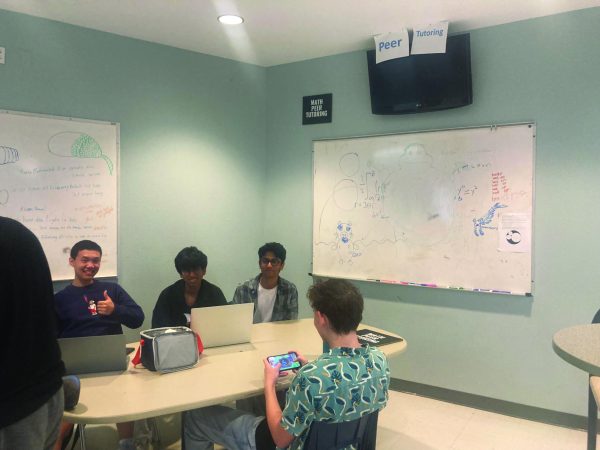LASA Language Lowdown
April 14, 2021
With students learning virtually, languages other than English (LOTE) teachers have been forced to make changes to the structure and curriculum of their classes. Students also have had to find new ways to manage their language courses and communicate with their LOTE teachers during Zoom classes.
Sophomore Nic Gallego is currently taking Spanish II. He said that compared with his Spanish I class the year before, there is less collaboration between classmates in a virtual setting, and asking questions is more difficult.
“Learning in person was definitely easier,” Gallego said. “In in-person class, the lectures would usually be a little longer, and the teacher would write what they were talking about on the board to explain it to you better. There were also in-person group activities, which was nice because we could just review the concept that we learned by actually using it in conversation.”
Gallego said that being able to interact with the teacher during the class period is important for better understanding and clarifying concepts. However, according to junior Edward Hao, who is enrolled in Chinese V, learning is more flexible in his higher-level LOTE class.
“Traditionally, the lower levels of Chinese class, I to IV, put more of a focus on learning vocabulary or grammar,” Hao said. “In levels V and VI, there’s a lot more freedom in how the class is structured. There’s a greater focus on the culture and the parts of China that you won’t really get just from learning vocabulary, and it’s more project-based.”
Hao said that for this reason, remote and in-person classes are similar for him on a day-to-day basis. However, he agreed that students still get less from classes on Zoom than they do at school.
“I know that in Chinese V last year, they were doing a lot of the same day-to-day things and assignments that I’m doing now,” Hao said. “The class is built pretty similarly, and the teachers post the same PowerPoints and lectures, and it’s still easy to communicate with teachers if we need to. But I still think learning in-person is better overall because in the classroom, you’re more immersed in the experience and the cultural aspect that you can’t really get from sitting in your room.”
Because of COVID-19, teachers had to shift their entire curriculum online to BLEND, Austin Independent School District’s digital learning platform. French instructor Rachel Pate said one advantage of remote learning is that it has allowed her to consolidate and organize her courses in a more streamlined way.
“In some ways, it’s really challenged my creativity in the sense that the quarantine has forced me to create a whole new curriculum based online and made me figure out how to explain the specifics of language concepts nonverbally,” Pate said. “Last year, I was new to LASA, so I didn’t get the opportunity to learn everything about BLEND because there were so many other things to figure out technology-wise. But now, I can put all of my assignments and grading in one place. Along with the fact that we don’t have physical papers to grade anymore, that’s definitely been a factor in helping me stay organized.”
According to Gallego, his in-person Spanish class had a stricter rule about speaking Spanish whenever possible. Although students sometimes need to speak English to ask questions, he said that less Spanish is spoken in Zoom classes, making the learning process more difficult.
“In general, the teachers are probably more lenient about only letting the students speak a foreign language now, but I don’t think that’s really a good thing,” Gallego said. “Learning a language is hard on its own, but I think it’s even harder over Zoom. Part of learning a language is also interacting and learning with other people in that language. It’s definitely not the best environment when it’s hard to even speak English to people, especially when they have their cameras off.”
Pate said that the current remote learning system is a good temporary replacement for classroom learning. However, she thinks communication in LOTE classes is something that can’t be replicated online.
“It’s also hard for me to tell if people are actually speaking French or not, since with in-person group work, you can actually hear what everybody’s saying, but with breakout rooms in Zoom, you can only listen to one group at a time,” Pate said. “With any remote class, it’s harder to ask questions and talk with students, but it’s even more limiting with LOTE classes where communication and talking with people is so important to learning.”










